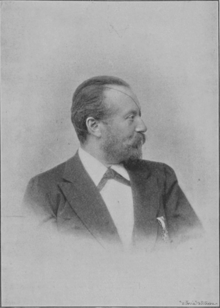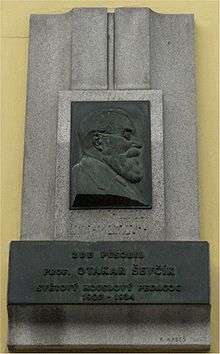Otakar Ševčík


Otakar Ševčík (22 March 1852 – 18 January 1934) was a Czech violinist and influential teacher. He was known as a soloist and an ensemble player, including his occasional performances with Eugène Ysaÿe.
Biography
Ševčík was born in Horažďovice, Austro-Hungary. Although he received his first lessons from his father, he studied under Antonín Bennewitz at the Prague Conservatory (1866–1870) and began his career in 1870 as concertmaster of the Mozarteum concerts in Salzburg, where he also taught. After 1873, he was concertmaster at the Prague Interim (Provisional) Theatre and the Komische Oper at the Ring Theatre in Vienna. From 1875 to 1892 he was professor of violin at the music school of the Russian Music Society in Kiev, at the same time appearing frequently as soloist. In 1892 he became head of the violin department at the Prague Conservatory, where he remained until 1906. He then taught privately in Písek. In 1909, he became director of the Violin Department at the Vienna Music Academy, until 1918, when at the end of World War I his nationality forced him to leave his position. He returned to the Prague Conservatory, where he stayed until 1921. He afterwards travelled in the United States and Great Britain as a teacher. He died in Písek, in the modern-day Czech Republic.
The phenomenal success of some of his pupils, such as Jan Kubelík, Jaroslav Kocián, Efrem Zimbalist, Juan Manén, Marie Hall, Victor Kolar and Erika Morini brought to him students from all parts of the world. Petrowitsch Bissing traveled from Hays, Kansas to study under him.[1]
Ševčík was famous as a violin teacher in Salzburg, Vienna, Prague, Kharkiv, Kiev, London, Boston, Chicago, and New York City.
His violin studies and violin methods were published in several books and are still important as major teaching tools. These studies include The Little Ševčík, an elementary violin tutor, which teaches the semitone system in 149 exercises, the School of Violin Technics (Schule der Violintechnik, four parts, 1880), First Position, vol. II, 2nd to 7th Positions, and Vol. III, Shifting, and Preparatory Exercises in Double-Stopping, Opus 9, and the Schule der Bogentechnik (six parts, 1893).
References
- ↑ Beck, Elisha (August 16, 2009). "Fall fundraiser will tour Rush County sites". Hays Daily News. Retrieved November 16, 2012.
- Ševčík, Otakar. The Little Ševčík, An Elementary Violin Tutor (1901). Miami, Florida: Kalmus/Warner Music. ISBN 0-7692-9729-3.
- "Ševčík, Otakar". Österreichisches Musiklexikon (in German). Verlag der Österreichischen Akademie der Wissenschaften. Retrieved 2008-07-16.
External links
![]() This article incorporates text from a publication now in the public domain: Gilman, D. C.; Peck, H. T.; Colby, F. M., eds. (1905). "article name needed". New International Encyclopedia (1st ed.). New York: Dodd, Mead.
This article incorporates text from a publication now in the public domain: Gilman, D. C.; Peck, H. T.; Colby, F. M., eds. (1905). "article name needed". New International Encyclopedia (1st ed.). New York: Dodd, Mead.